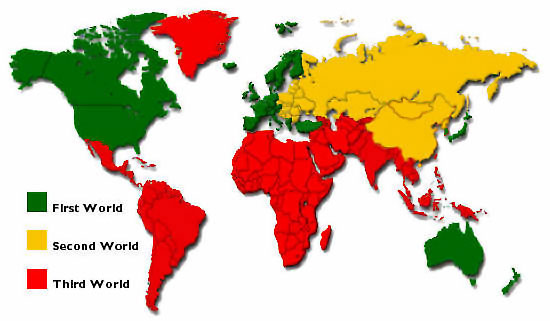Mass Media and Popular
Culture
The mass media
have come to play a fundamental role in modern society. The mass media are
media of communication – newspapers, magazines, television, radio, cinema,
videos, CDs and other forms – which reach mass audiences.
The newspapers
were among the most important of early mass media. They continue to be
significant, but other, newer media, particularly radio and television, have
supplemented them.
The influence
of the mass media on our lives is profound. The media not only provide
entertainment, but provide and shape much of the information which we utilize
in our daily lives.
In spite of
many studies of television and violence, it is still not clear how far, and in
what ways, the portrayal of violence on TV encourages aggressive behavior in
real life. Most of the research has underestimated how far viewers selectively
interpret what they see, and the complex ways in which the “fictional” and the “real”
interrelate.
A range of
different theories of media and popular culture have been developed. Innis and
McLuhan argued that media influences society more in terms of how they
communicate than what they communicate. In McLuhan´s words, “the medium is the
message”: TV, for example, influences people´s behavior and attitudes because
it is so different in nature from other media, such as newspapers or books.
Other important
theories include Haberman, Baudrillard and Thompson. Habermas points to the
role of the media in creating a “public sphere” – a sphere of public opinion
and public debate. Baudrillard has been strongly influenced by McLuhan. He believes
that new media actually change the “reality” we experience.
The sense today
of inhabiting one world is in large part a results of the international scope
of media of communication. A world information order – an international system
of the production, distribution and consumption of informational goods – has come
into being. Given the paramount position of the industrial countries in the
world information order, many believe that the Third World countries are
subject to a new form of media imperialism.
The media
industries worldwide tend to be dominated by a small number of very large
companies. Several of these are headed by celebrated media entrepreneurs. Many critics
worry about the concentration of media power in the hands of such powerful
individuals, who they say are not accountable to democratic procedures.
“Multimedia”
refers to the combination on a single medium of what used to be different media
needing different technologies, so that a CD-ROM, for example, can carry both
visuals and sound and be played on a computer.
Vocabulary
Public Opinion:
The views which members of the public hold on issues of the day.
Genre: a
concept applied in media studies to refer to a distinct type of media product
or cultural item. In the world of television, for example, different genres
include soap opera, comedy, news programs, sports and drama.
Global Village:
a belief that the world becomes like a small community. For instance, people in
many different parts of the world follow the same news events through
television programs.
Public Sphere:
it refers to an arena of public debate and discussion in modern societies.
Hyperreality: as
a result of electronic communication, there is no longer a separate “reality”
to which TV programs and other cultural products refer. Instead, what we take
to be “reality” is structured by such communication itself. For instance, the
items reported on the news are not just about a separate series of events, but
actually themselves define and construct what those events are.
Face-to-face Interaction:
interaction between individuals who are physically present in the same context
with one another.
Symbolic Power:
Power exercised by means of symbols rather than by direct control. Those who
run the culture industry, for instance, have a great deal of symbolic power
over the audiences who watch their TV programs or read their newspapers.
Criteria of Pop
Culture
1. Originates
from the people
2. Moves from
subculture to mainstream
3. Mass produced
4. Or created
for the "people" (mainstream)
5. Widely
favored by many people
6. Associated
with commercial products
7. Constantly
changing and evolving
Distribution: Delivery
of product to distributor and marketing.
Social Identity:
Self-concept based on group membership and the emotional attachments associated
with the membership. People use pop culture to develop their identity.
When an individual identifies him/herself as a group member, his/her beliefs,
interests and actions tend to become aligned with those of the group.
Subculture: Small
groups inside cultures - we can belong to many. Members share beliefs
and common experiences that set them apart from other members of a culture
(different parts of your identity come to play in diff subcultures).
Membership
Reference Group: Brand Communities (Harley Davidson). Fan
Communities/Fandom.
Aspirational
Reference Group: Change your behavior to be like those you aspire to be.
Fans and Fandom:
Identification with a media product, star or style - fans or follower of media
fads or fashions. Varying levels of commitment. Consumer, fan
clubs, fanzines, conventions, communities.
Cognitive Branding:
Functional Benefits. Focus is on how the brand's performance fulfills
your practical needs.
Cultural
Branding: Iconic Brands. Symbolism - strategic focus is on what the
brand stands for. They succeed b/c they forge a deep connection with the
culture and compete for culture share.
Objectification:
Any presentation emphasizing sexually suggestive body parts or not including
the head (this decreases feelings of guilt and demeans and dehumanizes the
model - making it like an object).
Ritualization
of Subordination: A classic stereotype of humble submission and respect is that
of lowering oneself physically in some form. Defenselessness, submissive,
powerless and vulnerable.
For class
discussion: http://catalog.flatworldknowledge.com/bookhub/reader/3833?e=lulemedia_1.0-ch01_s06
